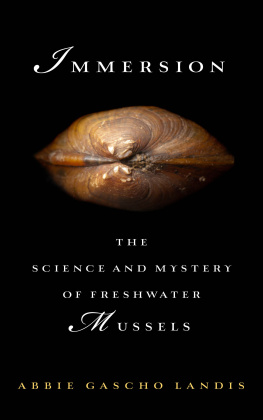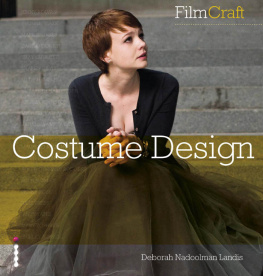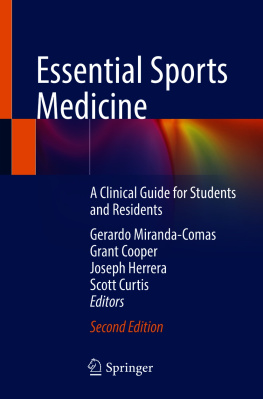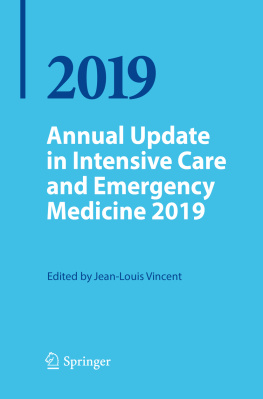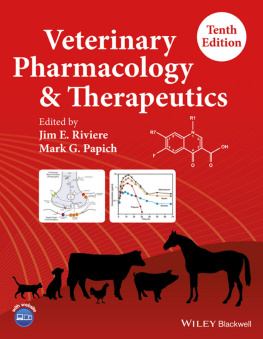Landis - Immersion
Here you can read online Landis - Immersion full text of the book (entire story) in english for free. Download pdf and epub, get meaning, cover and reviews about this ebook. year: 2017;2012, publisher: Island Press, genre: Detective and thriller. Description of the work, (preface) as well as reviews are available. Best literature library LitArk.com created for fans of good reading and offers a wide selection of genres:
Romance novel
Science fiction
Adventure
Detective
Science
History
Home and family
Prose
Art
Politics
Computer
Non-fiction
Religion
Business
Children
Humor
Choose a favorite category and find really read worthwhile books. Enjoy immersion in the world of imagination, feel the emotions of the characters or learn something new for yourself, make an fascinating discovery.
- Book:Immersion
- Author:
- Publisher:Island Press
- Genre:
- Year:2017;2012
- Rating:3 / 5
- Favourites:Add to favourites
- Your mark:
- 60
- 1
- 2
- 3
- 4
- 5
Immersion: summary, description and annotation
We offer to read an annotation, description, summary or preface (depends on what the author of the book "Immersion" wrote himself). If you haven't found the necessary information about the book — write in the comments, we will try to find it.
Landis: author's other books
Who wrote Immersion? Find out the surname, the name of the author of the book and a list of all author's works by series.
Immersion — read online for free the complete book (whole text) full work
Below is the text of the book, divided by pages. System saving the place of the last page read, allows you to conveniently read the book "Immersion" online for free, without having to search again every time where you left off. Put a bookmark, and you can go to the page where you finished reading at any time.
Font size:
Interval:
Bookmark:
For Andrew.
For Sam. For Stella.
For the river animals.
The Science and
Mystery of
Freshwater Mussels
By Abbie Gascho Landis

Washington | Covelo | London
2017 by Abbie Gascho Landis
All rights reserved under International and Pan-American Copyright Conventions. No part of this book may be reproduced in any form or by any means without permission in writing from the publisher: Island Press, 2000 M St., NW, Suite 650, Washington, DC 20036
Island Press is a trademark of The Center for Resource Economics.
Library of Congress Control Number: 2016957616
Printed on recycled, acid-free paper
Manufactured in the United States of America
10 9 8 7 6 5 4 3 2 1
Keywords: Alabama, Apalachicola-Chattahoochee-Flint river basin, Bivalvia, Chattahoochee River, Chewacla Creek, dams, Endangered Species Act, extinction, filter feeders, freshwater pearls, freshwater mussels, Georgia, gills, glochidia, Gulf pigtoe, little spectaclecase, Mollusca, Paint Rock River, pistolgrip, pollutants, rivers, shell, southern fatmucket, Tennessee River, Tennessee-Tombigbee Waterway, Unionidae, water scarcity, water quality

Island Press mission is to provide the best ideas and information to those seeking to understand and protect the environment and create solutions to its complex problems. Join our newsletter to get the latest news on authors, events, and free book giveaways. Click here to join now!
May what I do flow from me like a river,
no forcing and no holding back,
the way it is with children.
Rainer Maria Rilke
On a March day in 2009, nine years after Chewacla Creek dried up, I stood in the roadside weeds near a county road bridge in Alabama. The creekthe city of Auburns water supplywas flowing again, thanks to legal protection. I was wiggling first my legs, then my arms, into a borrowed wet suit. I left it unzipped while I bent over, one hand on the trucks tailgate for balance. My other hand reached to shoehorn my sneakers over neoprene booties. I straightened, returning my attention to the zipper. It gaped like an open shell, displaying my pregnant belly, almost four months round. With effort, I zipped up the two halves, encasing myself. My first child would dangle below me while I snorkeledsomething Id never done before.
I had joined this Auburn University field crew on a whim, based on a last-minute invitation. Stopping by a sporting goods store on the way, I had purchased a snorkel mask. The kid-sized snorkels fit my face better than adult ones, so I now carried a cartoonish fluorescent green snorkel, in contrast to everyone elses blue or black professional-looking gear. One these biologists was my husband, Andrew. He watched his whole family squeeze into my wet suit, then pointed us toward the creek.
We thrashed along, dropping down a steep bank, departing the road where it headed over the bridge. I picked my footing and eyeballed poison ivy, glad for the neoprene suit. Stepping into the creek, we spread out and moved upstream, away from the bridge where we had parked the truck. I sank to my knees, letting cool water flow over my thighs. It was shallower than a bathtub. When I eased forward onto my hands, the water didnt even cover my back. Biting the snorkel mouthpiece, I submerged my head through a layer of crisp-edged leaves and into another world.
A fish darted closeits eyes, its finely lined fins. Its gills clapped against its head as if it was slowly applauding my green-rimmed face. The creek filled my wet suit and filled my ears, dimming other sounds, gurgling through my head like a pitcher pouring into an endless glass. I reveled in the bright underwater world, delighting at each colorful darter slipping in and out of view. Sediment stayed on the creekbed, leaving the water clear until my fingers swept the rocks, raising a cloud. I grazed my belly upstream into better visibility, moving slowly to the rhythm of my breath whooshing up and down my snorkel.
Months later, when I learned the word for this creekbed worldbenthosI would remember each curled snail and crayfish scooting backward. The river bottom, the depths, the benthic bottom dwellers. I met the benthos face to face.
Then I lifted my head and realized I had fallen well behind the others. I slurped myself to a standing position and waded toward the bank. They had told me that the creeks edges often held many hidden freshwater mussels. Finding those mussels was our purpose for snorkeling Chewacla Creek in March.
Look for two small openings, they told me. Like two short tubes often sticking up just a bit from the mud. Once you get your search image, its easy, Professor Jim Stoeckel, a compact man who rarely stood still, assured me from across the creek. Youll really start seeing mussels.
After about an hour, the extent of Stoeckels optimism became apparent. I had plucked and flipped and groped at least fifty rocks, leaves, twigs, and lumps in the mud. Id never seen a mussel in the wild. My search image, which resembled two short drinking straws poking out of the mud, wavered like a mirage.
Its really hard to describe what to look for, Andrew told me later. I look for what is not mud and rocks. Something that has a particular shape. Something thats more perfect than everything surrounding it.
I refocused, remembering photos Id seen, and tried to imagine our quarry. These are not the coal-black ocean mollusks clinging like butterflies to rocks or jumbled on plates under decadent sauces. Neither are they the notorious zebra mussels, Dreissena polymorpha, invasive species plaguing rivers and lakes north of here. The family Unionidae, native freshwater mussels, lives in creeks and rivers and includes almost three hundred species in North America. Nearly 70 percent of them are imperiled.
These freshwater mussels live mostly buried. Their shell edges are parted like a surprised gasp, exposing two apertures. One intakes and the other releases water, which is how mussels eat, breathe, and even gather sperm to meet their eggs. Those apertures actually look like Georgia OKeefe paintingsflowers, female anatomyelegant ovals decorated with variously shaped and colored papillae. Apertures, papillae, curve of a shell. This is our search image.
Although I did not see her, a mussel was there, near my feet. Sometimes, sidling along with one meaty foot, this mussel would leave a trail, but now she nestled into sandy clay. Above this mussel, water flowed. Water flowed quickly, riffling and tugging her. Sometimes water barely flowed at all, pooling in the dry summer. Sometimes it flowed like cappuccino, dense with particulate, challenging the mussels filtering gills. Other times it flowed clear from bottom to surface, like today.
We stood in our wet suits, leaning toward the creekbank. Andrew pointed; I struggled to see what he described. Between my protruding abdomen and taut wet suit, I couldnt bend my waist, so I bent my knees and tipped forward.
Shes displaying, he told me. He waited while I stared.
Then the mussel seemed to materialize, differentiating from the leaves and rocks. Before my eyes, the creek bottom gained a dimension as I perceived its complexity. A little spectaclecase, Villosa lienosa, was doing the work of a freshwater musselfiltering. She was also doing the work of many females this time of yeardisplaying. Her gills bulged with offspring that shed brooded for months. Now the time had come. Above those offspring waved her mantle lure, decorated with multiple tentacles that looked like a clump of small black worms. The bait.
Font size:
Interval:
Bookmark:
Similar books «Immersion»
Look at similar books to Immersion. We have selected literature similar in name and meaning in the hope of providing readers with more options to find new, interesting, not yet read works.
Discussion, reviews of the book Immersion and just readers' own opinions. Leave your comments, write what you think about the work, its meaning or the main characters. Specify what exactly you liked and what you didn't like, and why you think so.

